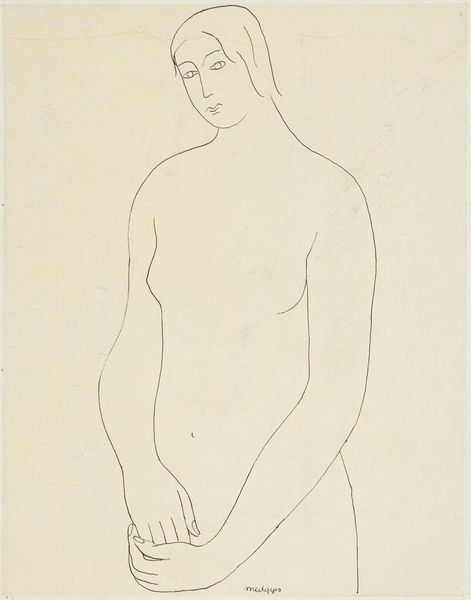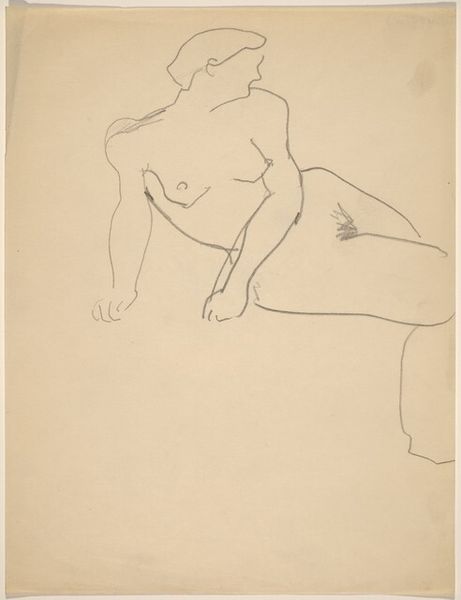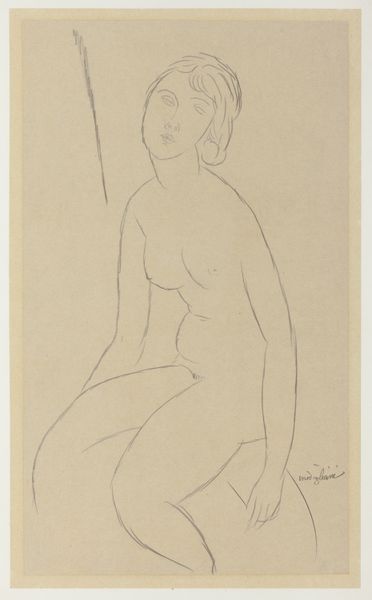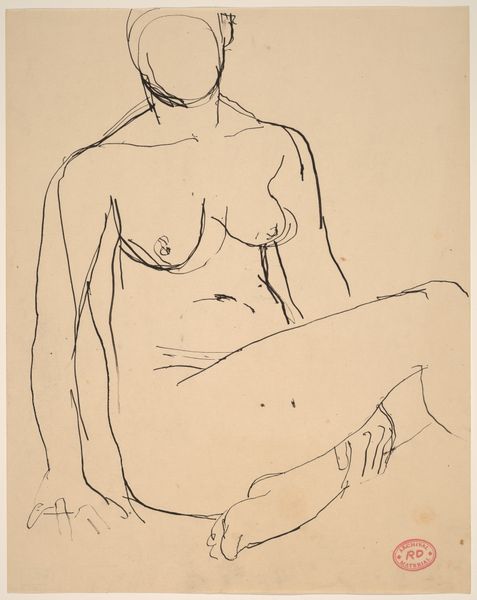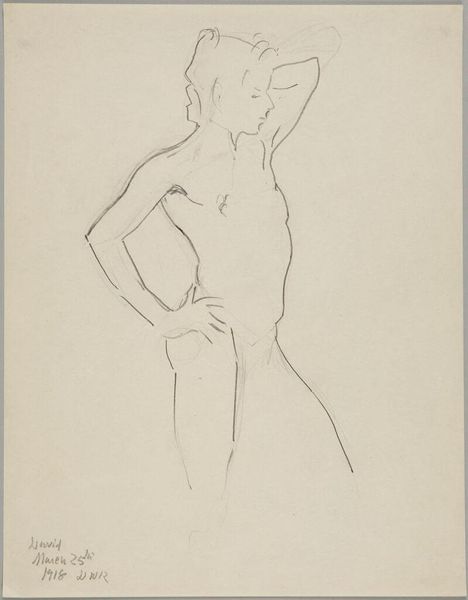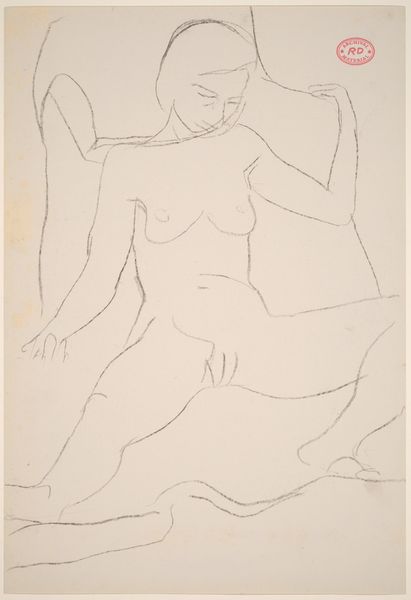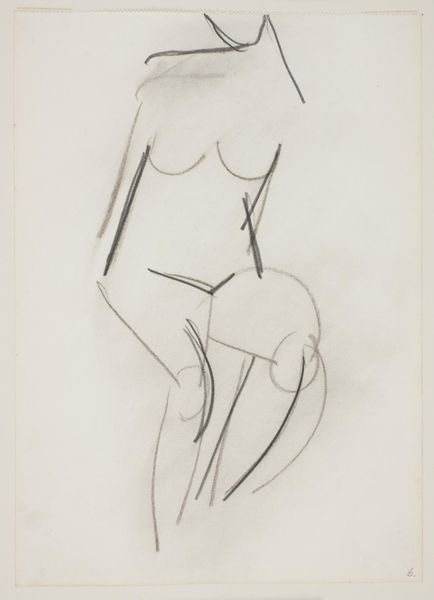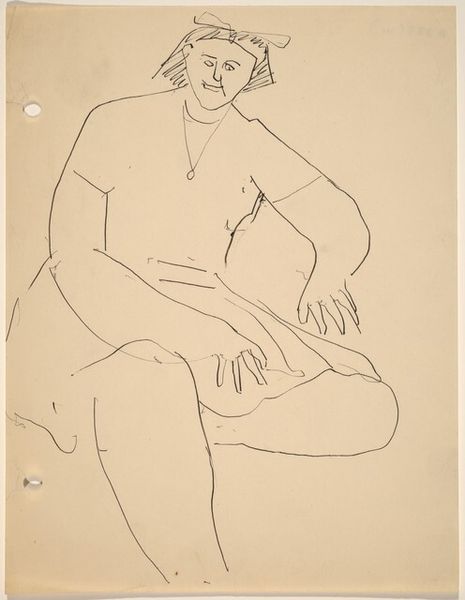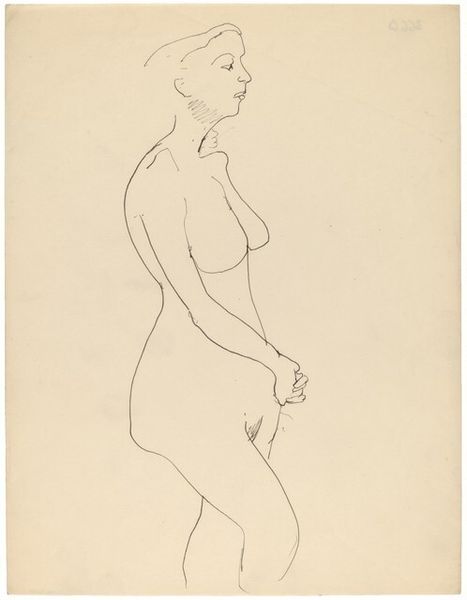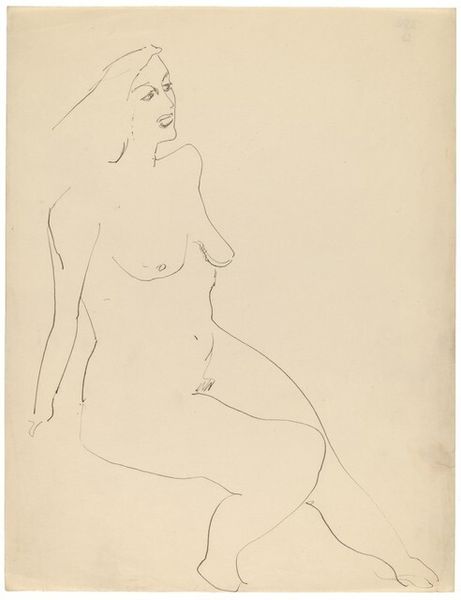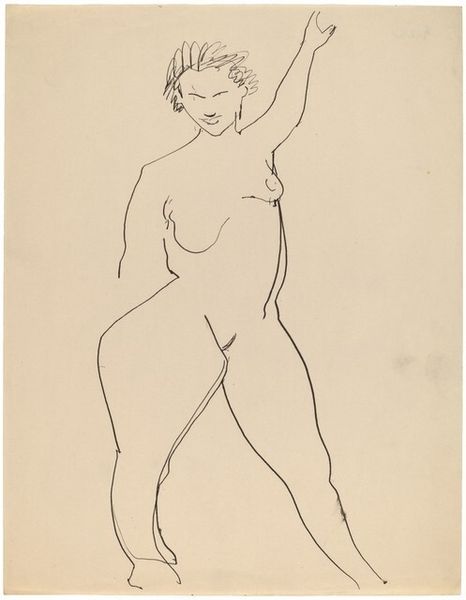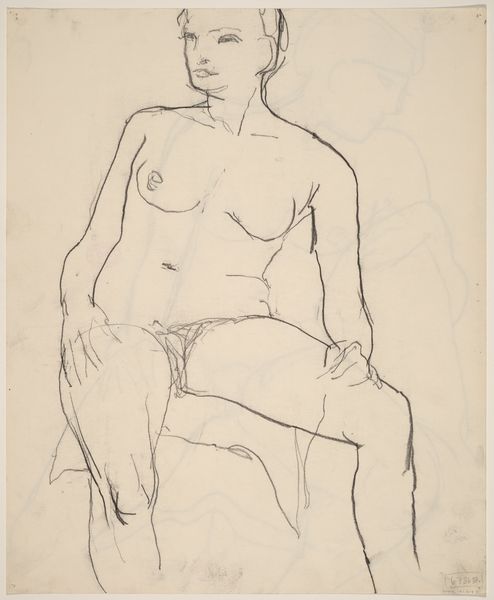
drawing, pencil
#
portrait
#
drawing
#
pencil sketch
#
figuration
#
pencil
#
academic-art
#
nude
Dimensions: height 320 mm, width 212 mm
Copyright: Rijks Museum: Open Domain
Curator: What an intriguing sketch! This is "Studieblad met twee vrouwen die hun hemd uittrekken" by Auguste Rodin, created sometime between 1850 and 1917. It’s currently housed in the Rijksmuseum, rendered in pencil on paper. Editor: My first impression? Ethereal and delicate. The figures seem to almost emerge from the page itself, a whisper of form rather than a declaration. There is a gentleness to it; though the women are unclothed, the sketch refrains from being overly sensual. Curator: Indeed. Considering Rodin's process, the very act of sketching was paramount. This piece provides access to his exploration of form, movement, and the nude body, highlighting the academic tradition prevalent during that era. One wonders, what studio constraints and models were available, shaping his portrayal of the human figure? Editor: Looking at the linear quality, the way Rodin uses the pencil almost like a sculptor's tool, carving out form with minimal strokes. You see the dynamism captured even within the static medium. I’m also fascinated by the interplay of light and shadow, achieved through varying pencil pressure. Note also that they appear both timeless and modern, owing perhaps to Rodin’s ability to blend classical forms with the evolving aesthetics of his era. Curator: The seeming simplicity can be misleading. The paper and pencil—relatively accessible materials—facilitate this seemingly effortless study. I wonder what the source of the paper was: how available was the quality required, or what pencil manufacture was most prized during his years of active sculpting? Did certain papers facilitate capturing of a sculptural body through the movement of his pencil, or enable multiple revisions? Such insight highlights the production elements essential for artists of his period. Editor: Good point. What do you think about the expressiveness Rodin has achieved with what looks like quick gestures? He defines weight, volume and intimacy, leaving us with a powerful emotional resonance, one of feminine beauty and grace rendered in spare but accurate lines. Curator: Agreed. And through his rendering, there lies the broader question of the status and commodification of the female nude as a subject within the 19th-century art market, its connection to academic practice and shifting cultural views on women and labour... Editor: Thinking about it, you’re right. Beyond pure aesthetics, Rodin’s sketch allows us a unique window into his practice and times. Curator: Absolutely, seeing not just the finished artwork, but also the physical materials and societal systems underpinning it. Editor: An artwork whose inherent simplicity generates multiple, and compelling insights!
Comments
No comments
Be the first to comment and join the conversation on the ultimate creative platform.
